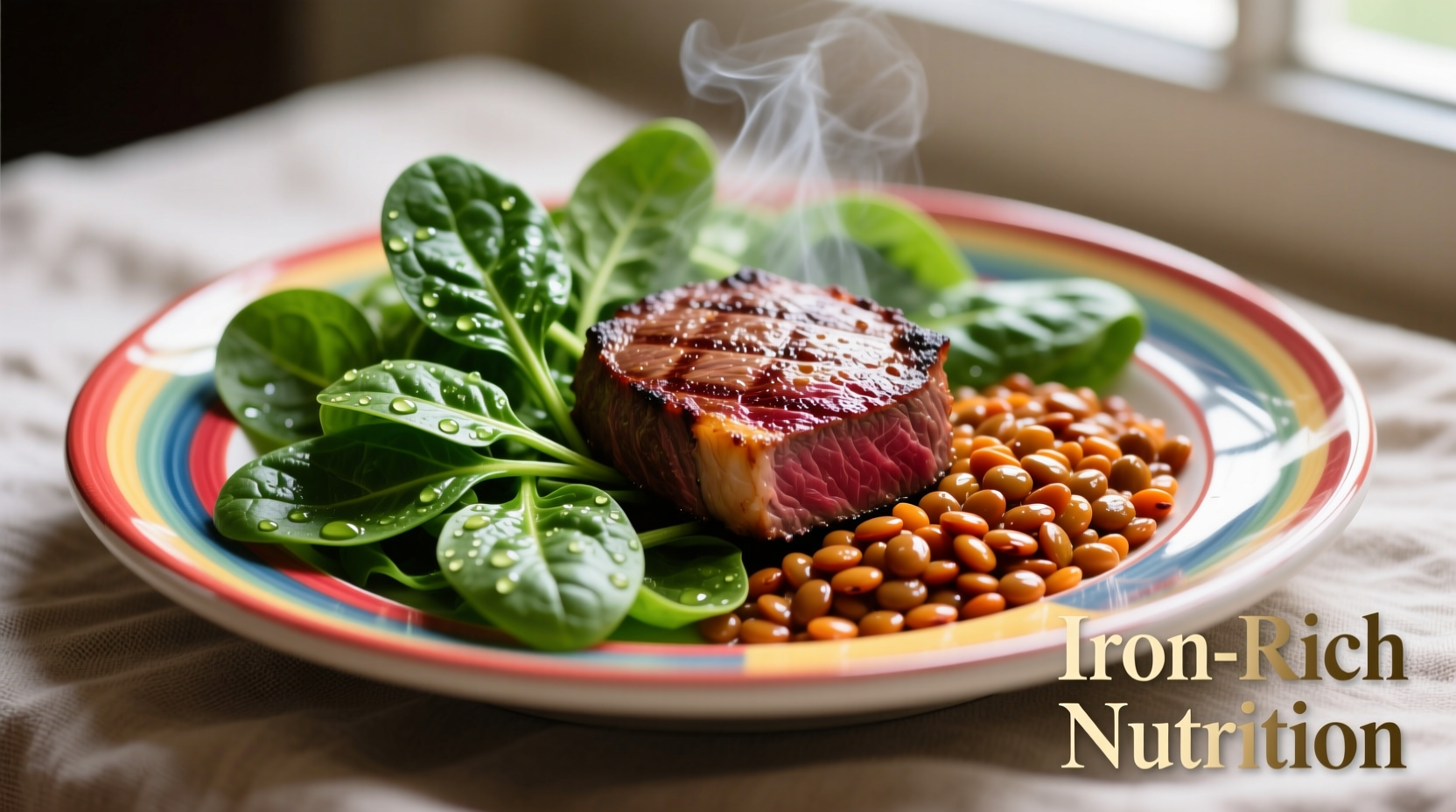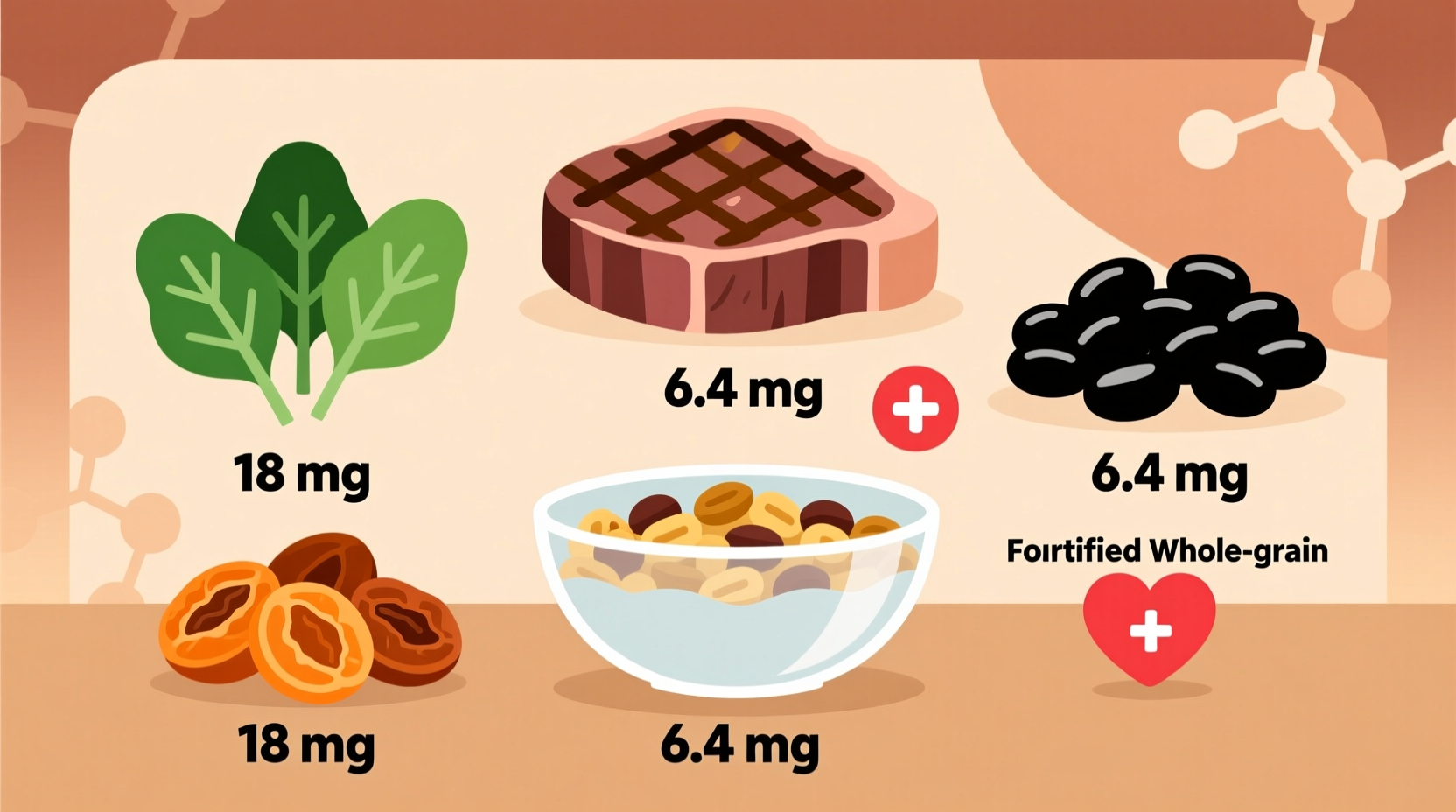Top iron-rich foods include clams (23.8mg per 3oz), liver (5.8mg per 3oz), spinach (3.2mg per cooked cup), lentils (3.3mg per cooked cup), and tofu (3.4mg per half cup). These foods provide substantial iron content per serving, with animal sources offering more readily absorbed heme iron while plant-based options require strategic pairing with vitamin C for optimal absorption.
Why Iron Matters: More Than Just Energy Levels
Iron deficiency affects over 1.6 billion people worldwide, making it the most common nutritional deficiency globally according to the World Health Organization. Your body needs iron to produce hemoglobin, the protein in red blood cells that carries oxygen throughout your system. Without sufficient iron, you may experience fatigue, weakened immunity, and impaired cognitive function. Understanding which foods deliver the most bioavailable iron helps you build meals that genuinely support your health.

Iron Powerhouses: Breaking Down the Best Sources
Not all iron-rich foods are created equal. The two types of dietary iron—heme (from animal sources) and non-heme (from plant sources)—differ significantly in absorption rates. Heme iron gets absorbed at rates of 15-35%, while non-heme iron absorption ranges from 2-20%. This difference dramatically impacts how much iron your body actually utilizes from each food.
| Food Source | Serving Size | Iron Content (mg) | Absorption Rate |
|---|---|---|---|
| Clams | 3 ounces | 23.8 | 15-35% |
| Beef liver | 3 ounces | 5.8 | 15-35% |
| Sardines | 3 ounces | 2.4 | 15-35% |
| Spinach (cooked) | 1 cup | 3.2 | 2-20% |
| Lentils | 1 cup cooked | 3.3 | 2-20% |
| Tofu | ½ cup | 3.4 | 2-20% |
Strategic Pairing for Maximum Iron Absorption
Simply eating iron-rich foods isn't enough—you need to optimize absorption. Research from the National Institutes of Health shows that consuming vitamin C-rich foods alongside iron sources can increase non-heme iron absorption by up to six times. Try these practical combinations:
- Spinach salad with strawberries and citrus dressing
- Lentil soup with bell peppers and tomatoes
- Oatmeal topped with dried apricots and kiwi slices
- Black bean tacos with fresh salsa
Conversely, certain compounds inhibit iron absorption. The Journal of Nutrition reports that calcium, polyphenols in tea and coffee, and phytates in whole grains can reduce iron uptake by 50-65%. Space these items at least two hours apart from your iron-rich meals for optimal results.
Special Considerations for Different Dietary Needs
Your iron requirements vary based on age, gender, and lifestyle factors. According to the USDA Dietary Guidelines, women of childbearing age need 18mg daily compared to 8mg for men, while pregnant women require 27mg. Vegetarians and vegans need nearly twice as much iron as meat-eaters due to lower absorption rates of plant-based iron.
Athletes, particularly endurance runners, often experience increased iron loss through sweat and foot-strike hemolysis. The American College of Sports Medicine recommends regular iron monitoring for competitive athletes. However, avoid excessive supplementation without medical supervision—too much iron can cause gastrointestinal distress and potentially damage organs.
Practical Meal Planning Strategies
Building iron-rich meals doesn't require drastic dietary changes. Start with these simple swaps:
- Replace morning cereal with iron-fortified oatmeal topped with pumpkin seeds
- Choose lentil-based pasta instead of traditional wheat varieties
- Add white beans to your favorite soups and stews
- Snack on trail mix with dried apricots and cashews
- Use cast-iron cookware for acidic foods like tomato sauce
Remember that consistent, moderate iron intake throughout the day works better than one massive iron-rich meal. Your body can only absorb about 1-2mg of iron per meal, so spreading your intake across multiple meals yields better results.
When Food Isn't Enough: Recognizing Deficiency
While dietary changes help many people maintain healthy iron levels, some require medical intervention. Symptoms of iron deficiency anemia include extreme fatigue, pale skin, shortness of breath, and brittle nails. If you experience these symptoms despite eating iron-rich foods, consult a healthcare provider for proper testing. Blood tests measuring ferritin levels provide the most accurate assessment of your iron stores.
Frequently Asked Questions
How quickly can dietary changes improve iron levels?
Significant improvements typically take 2-3 months of consistent dietary changes. Your body produces about 2.5 billion new red blood cells every second, but it takes time to rebuild depleted iron stores. Regular blood tests help track your progress.
Can you get too much iron from food alone?
It's extremely rare to overdose on iron through diet alone. The body naturally regulates iron absorption based on current stores. However, excessive supplementation without medical supervision can lead to iron overload, particularly in individuals with hemochromatosis.
Are iron supplements necessary for vegetarians?
Not necessarily. With strategic food combinations and awareness of absorption factors, many vegetarians maintain healthy iron levels. The Academy of Nutrition and Dietetics confirms that well-planned vegetarian diets can meet iron requirements. Focus on vitamin C pairing and consider cooking in cast iron.
Does cooking affect iron content in foods?
Cooking actually increases the bioavailability of iron in plant foods by breaking down cell walls. For example, cooked spinach delivers three times more absorbable iron than raw spinach. Using cast-iron cookware can also add significant iron to acidic foods like tomato sauce.











 浙公网安备
33010002000092号
浙公网安备
33010002000092号 浙B2-20120091-4
浙B2-20120091-4